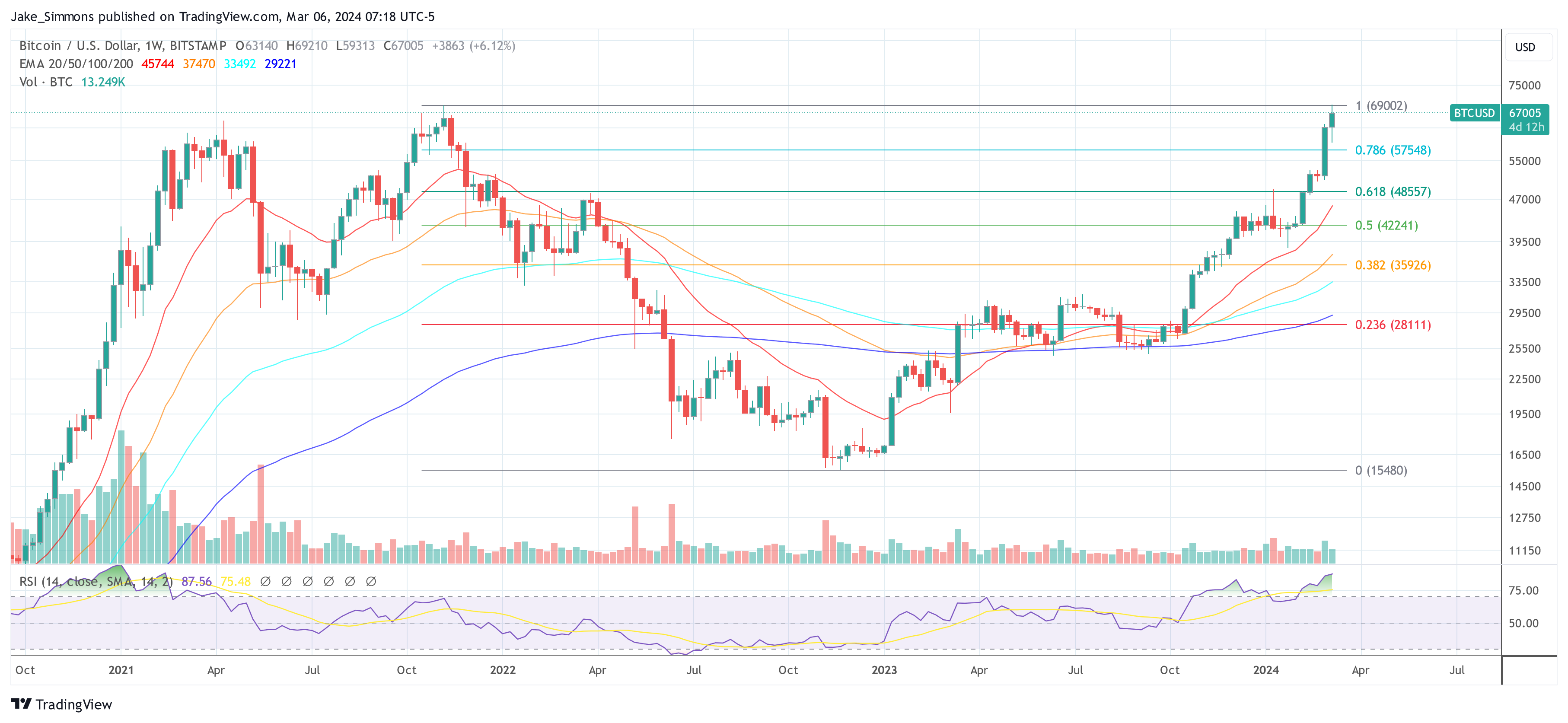As the US Federal Reserve’s Bank Term Funding Program (BTFP) approaches its conclusion on March 11, 2024, the Bitcoin and crypto market stands at a critical juncture. Instituted in March 2023 in the aftermath of the sudden collapses of Signature Bank and Silicon Valley Bank, the largest since the 2008 financial crisis, the BTFP has been a lifeline for US banks, offering loans against high-quality collateral to ensure liquidity in turbulent times.
The BTFP’s Closure And Its Implications For Bitcoin
The BTFP’s conclusion could send ripples through the financial sector, affecting banks’ liquidity and possibly leading to tighter lending practices. Crypto analyst Furkan Yildirim recently detailed on X, “With the BTFP’s end, banks may face liquidity constraints impacting their operations and profit margins. This could slow down economic growth due to reduced lending.”
However, he added that “the Fed might counter this by adopting a more lenient monetary policy, which could stabilize asset prices and prove beneficial for Bitcoin and the broader market.”
Arthur Hayes, the visionary behind BitMEX, provided a similar opinion in one of his latest essays. He identifies a trio of macroeconomic indicators – the Reverse Repo Program (RRP), the BTFP, and the imminent March interest-rate decision – as pivotal to the Bitcoin and crypto market.
Hayes predicts a severe market correction should liquidity sources, including the BTFP, dry up. “The market could face a harsh reality check without new dollar liquidity injections,” he suggests, indicating a possibly rough transition period for all asset classes, including cryptocurrencies.
The BitMEX founder anticipates a tumultuous March, with the possibility of a 30-40% correction in Bitcoin prices triggered by the BTFP’s expiry. Yet, he remains optimistic about a potential rebound ahead of the Federal Reserve’s meeting on March 20, hypothesizing that anticipatory actions by the Fed, such as rate cuts, could reinvigorate the market.
“This critical period could define the near-term liquidity scenario, offering a rebound opportunity for Bitcoin before further assessing the impact of the Fed’s decisions on market dynamics,” he explains.
More Expert Opinions
Balaji Srinivasan, former CTO of Coinbase, recently also offered a strategic viewpoint on the synchronicity of more key events, “BTFP expires in March. BTC halves in April. RRP runs out in May. All around the same time. So, the US banking system gets stressed right as Bitcoin gets scarce.” His analysis underscores the coincidental timing of the BTFP’s conclusion with Bitcoin’s halving event, suggesting a unique set of circumstances that could amplify market reactions.
Ansel Lindner, host of BTC Markets, provided a commentary amidst growing concerns over regional banking stability. Following revelations of “material weakness” in New York Community Bank’s (NYCB) loan risk tracking and a significant increase in its loan loss reserves earlier this month, Lindner pointed to potential early signs of another banking sector stress.
“It’s starting… Remember what happened to Bitcoin during last March’s banking crisis? The BTFP was created on 12 March 2023, Bitcoin rallied 40% within 2 weeks. #SafeHaven,” Lindner said, highlighting the potential for Bitcoin if the US Fed decides to intertwine again.
In conclusion, the Bitcoin and crypto markets are at a crossroads on March 11, with potential outcomes ranging from significant downturns to bullish recoveries, contingent on the Federal Reserve’s actions and broader macroeconomic trends. The end of the BTFP signifies more than just the cessation of a temporary liquidity program; it represents a moment of truth for the banking sector’s resilience and the crypto market’s response to shifting economic tides.
At press time, BTC traded at $67,005.








